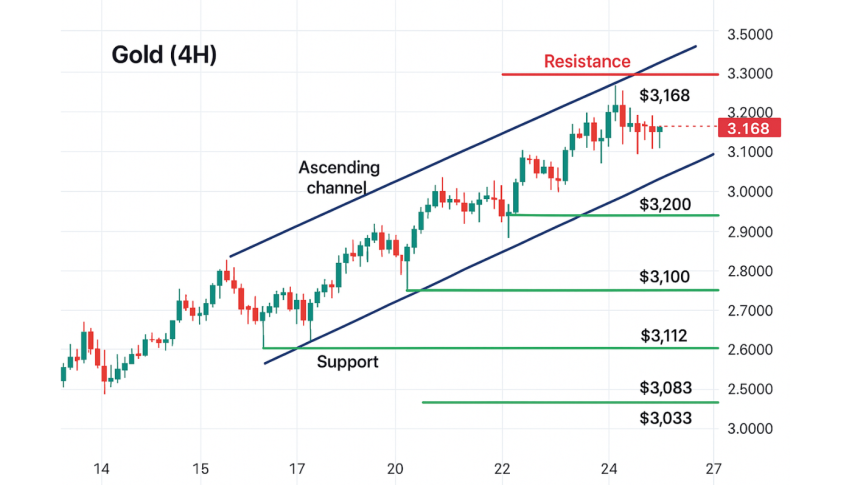Weekly Outlook, Nov 1 – 5, 2021: Top Economic Events to Watch This Week
The broad-based US dollar managed to extend its previous bullish bias, and it looks forward to ending this week on a bullish note, as the stock markets fell on Friday, putting upward pressure on the safe-haven US dollar. The gains in the dollar were restrained by a stronger Euro, as investors bet on quicker European interest rate hikes.
The US Federal Reserve and the Bank of England (BOE) will announce their policy decisions next week. While the Fed is likely to begin asset tapering in November, it is projected that the Bank of England will raise interest rates. The US Dollar Index, which compares the value of the US dollar to a basket of other currencies, has risen by 0.07 percent, to 93.388.
The RBA Rate Statement, the minutes of the Monetary Policy Meeting and the FOMC Statement will influence the market in the coming week. Furthermore, long-standing geopolitical tensions and coronavirus headlines will be constantly monitored, as they may play a crucial role in determining market risk levels.
The Top Economic Events to Watch This Week
1. US ISM Manufacturing PMI – Monday November 1, 13:00 GMT
ISM Manufacturing PMI – The Manufacturing Index from the Institute for Supply Management (ISM) shows the condition of the manufacturing industry in the United States. It is an important measure of the overall economic situation in the United States. A score of more than 50 is considered favorable (or bullish) for the USD, while a score of less than 50 is considered negative (or bearish).
Previous Releases
ACTUAL: 61.1
DEV: 0.77
CONS: 59.6
DATE: 05/03/2021 19:00
Last Release: Friday, October 1, 2021 14:00
2. RBA Interest Rate Decision: – Tuesday November 2, 2:30 GMT
RBA Interest Rate Decision – The Reserve Bank of Australia announces its interest rate decision. The AUD is positive or bullish if the RBA is hawkish about the economy’s inflationary outlook and raises interest rates. Similarly, if the RBA has a dovish view of the Australian economy and maintains or lowers the interest rate, it is considered negative or bearish.
Previous Releases
ACTUAL: 0.1 %
DEV: 0.00
CONS: 0.1 %
Last Release
Tuesday, October 5, 2021, 03:30
ii) RBA Interest Rate Statement
The Reserve Bank Board makes interest rate decisions, which are announced in a media release at 2.30 pm after each Board meeting. It’s one of the RBA Reserve Bank Board’s primary tools for conveying monetary policy to investors. It includes the conclusion of their interest rate decision and a discussion on the economic conditions that impacted it. Most significantly, it explains the economic prospects and provides hints about how future decisions will turn out.
3. ISM Services PMI – Wednesday, November 3, 13:00 GMT
The Non-Manufacturing Index by the Institute for Supply Management (ISM) measures the condition of the non-manufacturing sector in the United States. It’s worth noting that the non-manufacturing sector has less impact on the GDP either way, than the ISM Manufacturing sector. For the USD, a result above 50 is positive (or bullish).
Previous Releases
ACTUAL: 61.9
DEV: 0.79
CONS:60
Wednesday, August 4, 2021, 19:00
Last Release
Tuesday, October 5, 2021 14:00
4. Fed’s Monetary Policy Statement – Wednesday November 3, 18:00 GMT
The FOMC releases its monetary policy decision following the deliberations by the Fed. The statement may impact USD volatility and determine whether the currency is in a positive or negative trend short-term. A hawkish or optimistic view of the USD is considered favorable, while a dovish or bearish perspective is considered bad.
5. OPEC-JMMC Meetings: – Thursday, November 4, All Day
Representatives from the 13 OPEC member countries, as well as 11 other oil-rich nations, attend these meetings. The goal of this meeting is to coordinate and unify the petroleum policies of its member countries, and to ensure the stabilization of the oil markets, in order to maintain a reliable, cost-effective, and consistent supply of petroleum to consumers. In short, they talk about various topics related to the energy markets and, most crucially, they agree on how much oil they will produce. After the meeting, officials frequently engage with the media for the rest of the day. After the meetings, a formal statement is compiled, detailing policy shifts and the objectives of the meeting.
6. US Unemployment Claims – Thursday November 4, 11:30 GMT
The Initial Jobless Claims report is released by the US Department of Labor. It measures the number of people filing first-time claims for state unemployment insurance. In other words, it serves as a barometer of the strength of the labor market. A higher-than-expected number signals a weak market, which impacts the health and direction of the US economy. In general, a lower figure is considered positive or bullish for the USD.
Previous Releases
ACTUAL: 281K
DEV: -0.37
CONS: 290K
Last Release
Thursday, October 28, 2021 12:30
7. CAD – Employment Rate – Friday, November 5, 11:30 GMT
CAD – Employment Change – Statistics Canada’s Employment Change measures the change in the number of employed individuals in Canada. In general, a rise in this statistic has good implications for consumer spending, which boosts economic growth. A high reading is considered positive or bullish, while a low score is deemed to be negative or bearish.
Previous Releases
ACTUAL: 157.1K
DEV: 2.32
CONS: 65K
Last Release
Friday, October 8, 2021 12:30
ii) – Unemployment Rate:
Statistics Canada’s Unemployment Rate shows the number of jobless workers, divided by the total civilian labor force. It is a leading economic indicator in Canada. If the rate rises, it means the Canadian labor market isn’t expanding. An increase in this figure causes the Canadian economy to decline. A drop in the figure is considered favorable (or bullish) for the CAD, while an increase is considered negative (or bearish).
Previous Releases
ACTUAL: 6.9 %
DEV: 0.00
CONS: 6.9 %
Last Release
Friday, October 8, 2021 12:30



